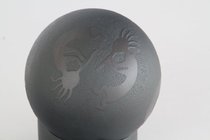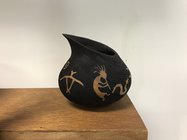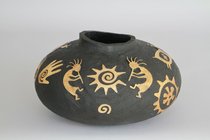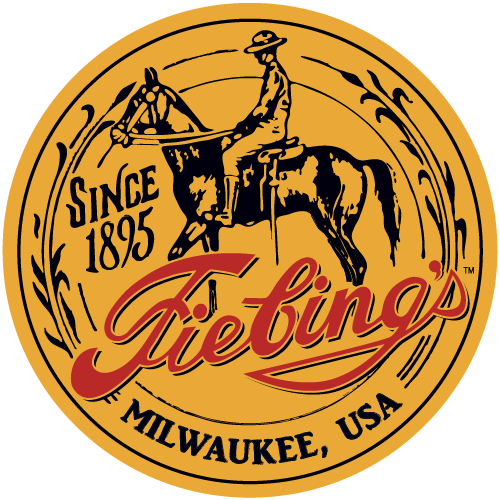@hockenbery , you have frequently mentioned that you use Fiebing's Leather Dye in the USMC Black color to ebonize wood. I was wondering if you could go into some detail on the application and limitations of the product. For example,: How do you apply it? How well does it work on light woods like maple? Can it be overcoated with wipe on finishes, or do the solvents re-dissolve the dye? If you have the time, I'd welcome hearing whatever details you care to share. I have a project that I'm about to begin and I'm thinking of using this dye to ebonize the maple.
-
December 2025 Turning Challenge: Single Tree! (click here for details) -
Congratulations to Bob Henrickson, People's Choice in the November 2025 Turning Challenge (click here for details) -
Congratulations to Guillaume Fontaine for "Old Tea Pot" being selected as Turning of the Week for December 15, 2025 (click here for details) -
Welcome new registering member. Your username must be your real First and Last name (for example: John Doe). "Screen names" and "handles" are not allowed and your registration will be deleted if you don't use your real name. Also, do not use all caps nor all lower case.
You are using an out of date browser. It may not display this or other websites correctly.
You should upgrade or use an alternative browser.
You should upgrade or use an alternative browser.
Fiebing's Leather Dye USMC Black?
- Thread starter Mark Jundanian
- Start date
I am interested in this as well. Thanks for posting Mark.
- Joined
- Apr 27, 2004
- Messages
- 9,304
- Likes
- 6,059
- Location
- Lakeland, Florida
- Website
- www.hockenberywoodturning.com
I use feibings usmc black.@hockenbery , you have frequently mentioned that you use Fiebing's Leather Dye in the USMC Black color to ebonize wood. I was wondering if you could go into some detail on the application and limitations of the product. For example,: How do you apply it? How well does it work on light woods like maple? Can it be overcoated with wipe on finishes, or do the solvents re-dissolve the dye? If you have the time, I'd welcome hearing whatever details you care to share. I have a project that I'm about to begin and I'm thinking of using this dye to ebonize the maple.
it has turned every wood I have used it on black.
it has a shelf life of years. Easy to use. treat it like any finish Safety wise. I wear nitrile gloves, safety glasses with side panels, and have a fan blowing. I’ve gotten it on my fingers a few times being careless with the used brush or putting the cap on the bottle after taking off the gloves. Rinsed with water no I’ll affects.
I apply it with a disposable foam brush. One coat does it. I get The whole surface wet. It dries quickly
i have always let it dry overnight before applying a finish.
I have used several finishes over the dyed wood.
waterlox a lot, occasionally others like odies oil, krylon type clear finishes, Watco
this is waterlox over a dyed citrus which was whitish.

I got poor results in two applications.
1. I airbrushed it over sandblast resist to blacken the sandblasted background. I got tiny bits of bleeding under the resist.
black airbrush paint works better since it doesn’t wick under the mask if it isn’t tight.
2. I used it to blacken the inside of some hollow forms. It didn’t bleed through but it did darken the outside a bit. I use
Black airbrush for this now.
cherry was airbrushed with leather dye see the bleeding on kokapeli‘s headdress

Cherry with black air brush paint

Last edited:
Thanks for that information, Al.
It appears that the black is fairly flat, but that may be the texturing on your piece. If I apply a satin clear coat (e.g. Osmo Polyx-Oil), would I expect a satin sheen?
You had that problem with resist, any further thoughts on how to keep it off a select area (say the bottom, where I put my name), using a foam brush?
In your experience can it be readily sanded off, or does the dye penetrate deeply?
It appears that the black is fairly flat, but that may be the texturing on your piece. If I apply a satin clear coat (e.g. Osmo Polyx-Oil), would I expect a satin sheen?
You had that problem with resist, any further thoughts on how to keep it off a select area (say the bottom, where I put my name), using a foam brush?
In your experience can it be readily sanded off, or does the dye penetrate deeply?
Hockenbery,I am very interested too.I am interested in this as well. Thanks for posting Mark.
I use feibings usmc black.
Where did you find the dye and kokopelis? Did you buy the sandblast resist from Trent Bosch?

Leather Dye - Fiebing's
The most recognized penetrating, alcohol-based leather dye in the world. Dries uniformly and mixes easily to create interesting middle tones. A How do I dye leather? By design, Fiebing’s Leather Dye works as a penetrating dye. That means that the dye is absorbed into the leather to color it and...
I found the dye at Tandy Leather. I would imagine any leather shop in your area would have it.Hockenbery,I am very interested too.
Where did you find the dye and kokopelis? Did you buy the sandblast resist from Trent Bosch?
- Joined
- Apr 27, 2004
- Messages
- 9,304
- Likes
- 6,059
- Location
- Lakeland, Florida
- Website
- www.hockenberywoodturning.com
Amazon has the usmc black. Many other sources too.Hockenbery,I am very interested too.
Where did you find the dye and kokopelis? Did you buy the sandblast resist from Trent Bosch?
I get my resist #T226, 22 mil from uscutter.com. I have known Trent a long time. I gave Trent some #T226 and he liked using as much as I do. Trent is a good source for small quantities of the #T226 resist.
if you are interested in sandcarving, you may wish to read the article I wrote in the December 2016 AAW journal. I mention Trent in the article. Working with Trent opened my eyes to possibilities of sandcarving.
I also show some tips and list sources in the demo handout - http://aaw2016.hockenbery.net/
there was a thread on compressor sizes for sandblasting that has some good information on sandcarving.
Last edited:
- Joined
- Apr 27, 2004
- Messages
- 9,304
- Likes
- 6,059
- Location
- Lakeland, Florida
- Website
- www.hockenberywoodturning.com
one tip for a film finish is start with a light coat. Alcohol based stains tend to float pigments into the finish. That makes the first coat a tiny bit cloudy. Each subsequent coat of finish increases the brightness and sheen.Thanks for that information, Al.
It appears that the black is fairly flat, but that may be the texturing on your piece. If I apply a satin clear coat (e.g. Osmo Polyx-Oil), would I expect a satin sheen?
You had that problem with resist, any further thoughts on how to keep it off a select area (say the bottom, where I put my name), using a foam brush?
In your experience can it be readily sanded off, or does the dye penetrate deeply?
the fool proof clear bottom is to turn it after you dye.
Turned grooves will stop the dye pretty well. Woodburned lines stop the dye runs too.
i haven’t sanded the dyed areas so not sure how deep the dye penetrates. I would expect the depth to vary by wood density and surface prep.
Last edited:
Hi Al, My daughter"s business logo incorporates kokapelis in her business logo. I would like to turn a ho;;ow form and sandcarve kokapelis on it. Do you have a source for kokapeli stencils?
- Joined
- Apr 27, 2004
- Messages
- 9,304
- Likes
- 6,059
- Location
- Lakeland, Florida
- Website
- www.hockenberywoodturning.com
I think your best bet is finding a friend with a vinyl cutter- I sent you a conversation.Hi Al, My daughter"s business logo incorporates kokapelis in her business logo. I would like to turn a ho;;ow form and sandcarve kokapelis on it. Do you have a source for kokapeli stencils?
lots of folks sell stencils for airbrushing. I don’t know of anyone selling sandblast resist stenCole’s.
I got started with sandcarving wanting to do a globe. While I was looking for a local signmaker or glass sandcarver to talk into cutting some resist for me. Google introduced me to Uscutter. A phone call with their tech rep got me onto the best resistance for woodturning and I got a vinyl cutter.
my cutter came with software that traces any jpg image. it does great on silhouettes and the software smooths lines for better cutting.
once I got an gore strip image of the earth that matched the size of my ball I could sand-carve a globe.
then lots of other projects….
you can handcut a few stenciled with an exacto knife. I hand cut dragon flies in demos to show the process.
if you get into sandcarving you will want a vinyl cutter and tots of other stuff.
not feasible fo a one of…. Look for my message
I have used Fiebing's dye for a number of projects. Just a word of caution if you use colors other than black. I have found all the colors go on smoothly and it is easy to get a consistent color throughout the piece. You can also use artist brushes for touch ups or for small accents. The black seems pretty solid when putting another finish over it, but colors other than black have a tendency to run or bleed when top coated. Always do a test first or you may end up with a nasty surprise.
I use a white scotchbrite pad to apply Osmo ---- when applying over black dyed areas, there is some black color on the pad afterwards. Not enough to notice any issue with the color of the wood. I use gloss Osmo polyx, and it produces what I would call a semi gloss sheen as-wiped, and a little glossier after Beall buffing. Dying does not affect the sheen.
